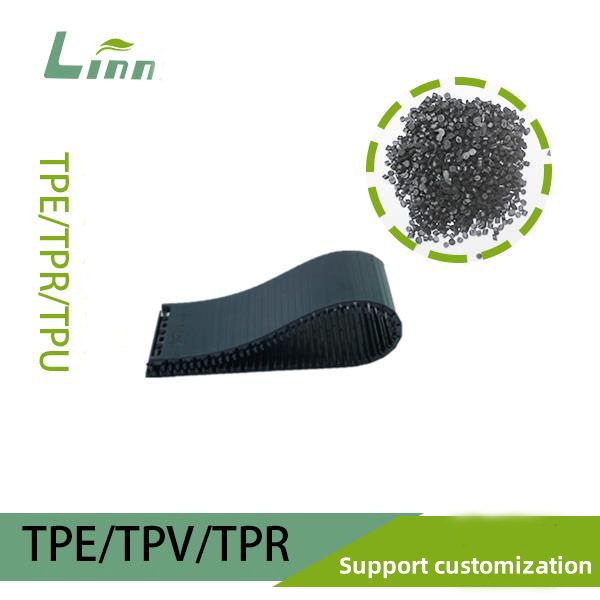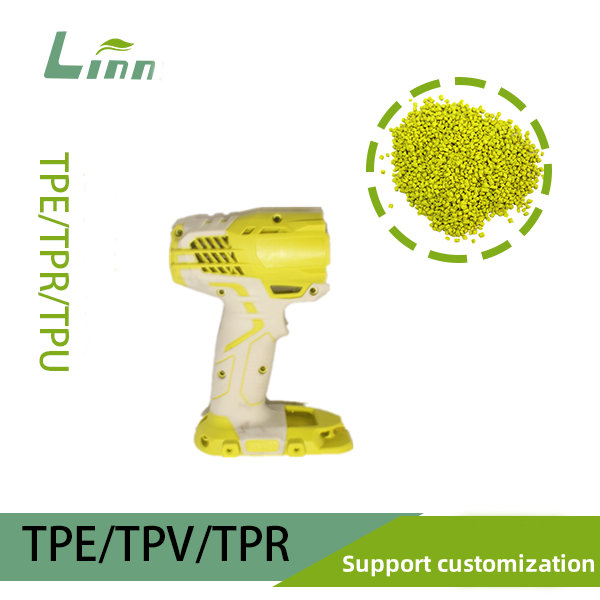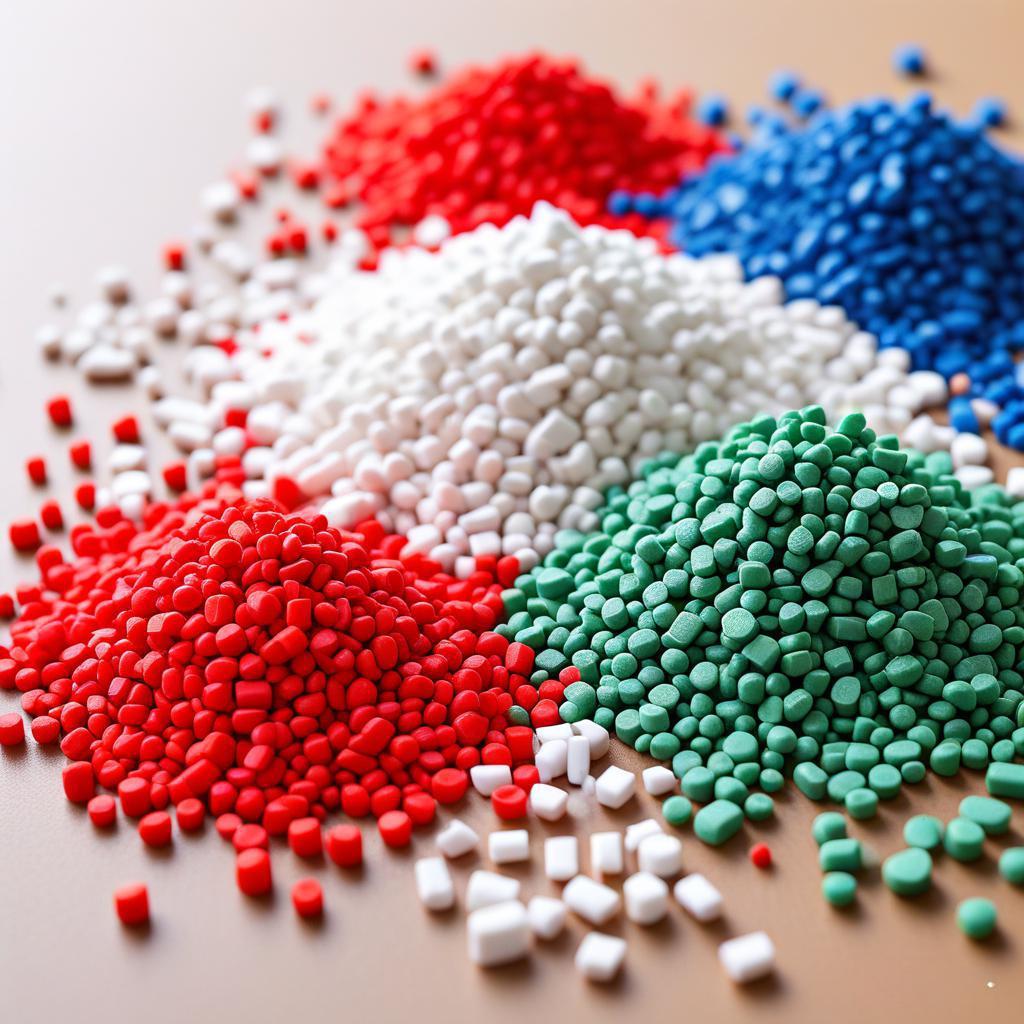I’ve been knee-deep in the world of thermoplastics for over fifteen years now, molding everything from sleek phone cases to rugged tool grips. There’s something almost magical about watching a rigid ABS base come alive with a soft TPE layer—it’s like giving a stiff board a rubbery heartbeat. But magic? Nah, it’s physics and chemistry at play, and when bubbles sneak in during that encapsulation, it feels like a cruel joke from the material gods. You know the frustration: you’re aiming for that seamless, grippy finish, but instead, you get these pesky voids that mar the surface, weaken the bond, and send your production line into a tailspin. If you’ve ever stared at a ruined batch and wondered, “Why me?”, you’re not alone. Folks searching for answers like this are usually knee-deep in troubleshooting—maybe a new project hit a snag, or quality control just flagged a defect that’s eating into deadlines. The core itch? Figuring out why these bubbles form so readily in TPE over ABS, and more importantly, how to squash them before they squash your profits.

Let me paint the picture. ABS, that tough-as-nails acrylonitrile-butadiene-styrene blend, is the backbone of countless gadgets—durable, impact-resistant, and easy to shape. Then comes TPE, the thermoplastic elastomer, swooping in like a flexible cloak to add that soft-touch allure. Encapsulation means injecting molten TPE over a pre-molded ABS part, creating a hybrid that’s equal parts strength and squish. Sounds straightforward, right? But in practice, it’s a delicate dance. Bubbles aren’t just cosmetic; they signal deeper mismatches—trapped air, moisture ghosts, or thermal tantrums—that can lead to delamination or outright failure down the line. I’ve chased these gremlins across factories from Shenzhen to Detroit, and each time, it’s a reminder that materials don’t always play nice without a nudge.
Think of it like trying to pour honey over a frozen cake. If the cake’s too cold or the honey’s too thick, pockets of air get trapped, refusing to merge. That’s TPE on ABS in a nutshell. The process amplifies everyday flaws: a dash too much moisture in the pellets, and it vaporizes into steam bubbles during heating. Or maybe the mold’s venting is as welcoming as a closed door, leaving gases no escape route. Over the years, I’ve learned these aren’t random acts—they stem from how TPE’s rubbery soul clashes with ABS’s glassy rigidity. But here’s the good news: understanding the culprits arms you with fixes that turn headaches into high yields. Stick with me, and we’ll unpack this layer by layer, drawing from real-world scrapes I’ve bandaged myself.
The Heart of the Matter: What Even Is TPE Encapsulation on ABS?
Before we dive into the bubble blame game, let’s ground ourselves. Encapsulation, or overmolding as the pros call it, is that second-shot injection where TPE wraps around an ABS core like a custom-fitted glove. ABS brings the structure—picture its crisp edges holding up under drops and dings—while TPE delivers the tactile joy, that velvety grip that makes your hand linger on a remote or a steering wheel cover. Why pair them? Because together, they’re unbeatable for consumer electronics, automotive bits, and handheld tools. ABS alone is slick and unforgiving; TPE softens the blow, literally and figuratively.
But here’s where my gut twists a bit—I’ve seen too many engineers overlook the intimacy required. These aren’t just materials stacking up; they’re bonding at a molecular whisper. TPE, often based on styrenic blocks like SEBS, flows like warm taffy at 180-220°C, seeking to intertwine with ABS’s polar chains. When it works, the result hums with harmony: no seams, no slips, just pure product poetry. Yet, bubbles crash the party, those tiny traitors born from overlooked oversights. They’re voids, really—air pockets or vapor ghosts that refuse to dissipate. In thick sections, they lurk like hidden landmines; on surfaces, they pockmark like acne on a teen’s big day. And in encapsulation? They’re amplified because TPE’s got to infiltrate every nook without stirring up a storm.
I remember my first big flop on this front, back in 2012. We were overmolding TPE onto ABS dashboard trim for a mid-tier sedan. The client wanted that premium soft feel, but bubbles popped up like fireworks—erratic, infuriating. Turns out, it was a combo of damp pellets and a mold that vented about as well as a sealed jar. That night, I stayed till dawn tweaking dryers and vents, emerging with a lesson etched in sweat: bubbles don’t just happen; they whisper warnings if you listen close.
Peeling Back the Layers: Common Causes of Bubbles in This Tricky Tango
Alright, let’s roll up our sleeves and dissect why TPE loves to bubble on ABS more than on, say, PP. It’s not spite—it’s science, wrapped in the quirks of polarity, flow, and heat. At its core, bubbles emerge when gases get cozy where they shouldn’t: trapped air from filling, steam from wet resin, or even volatiles off-gassing like uninvited guests at a quiet dinner. In encapsulation, the stakes rise because TPE’s squeezing into tight spaces over a substrate that’s already set, leaving little room for mercy.
First off, moisture mischief steals the spotlight. TPEs are hygroscopic little sponges, slurping up humidity from the air faster than you can say “dehumidifier.” When you heat them to melt, that water boils into steam, expanding into bubbles that dot the final piece like Swiss cheese. ABS isn’t as thirsty, but in the hybrid setup, any dampness in the TPE transfers the blame. I’ve felt the sting—once, a batch sat out overnight in a muggy shop, and the next day’s run was a bubble bonanza. The fix? Bake those pellets at 80-100°C for a couple hours; it’s like giving them a spa day to sweat out the stress.

Then there’s the air entrapment drama, the sneaky side effect of how TPE flows. Imagine pouring syrup into a mold riddled with crevices—the ABS surface, if not prepped right, creates dead zones where air huddles, refusing to budge. High injection speeds can shear in more air, like whipping cream too furiously. Slower fills help, but too slow, and you invite other woes like weld lines. Vents are your saviors here—those narrow channels etched into the mold that let gases exhale like a sigh of relief. Without them, pressure builds, and pop—bubbles.
Thermal mismatches add fuel to the fire. ABS molds cool to around 50-80°C, but TPE demands 180-220°C to flow freely. That delta? It contracts unevenly, pulling in voids as the materials settle. If the mold’s too chilly, TPE solidifies prematurely, trapping gases like a cork in a bottle. Crank the heat gradually, and you’ve got a smoother merge. Oh, and don’t get me started on shear rates at the gate—tiny openings for aesthetics mean high-speed rushes that froth the melt, birthing bubbles downstream.
Material compatibility isn’t innocent either. TPE and ABS bond via polar attractions, but if the TPE’s formula lacks compatibilizers, phases separate like oil and water, leaving gaps for air to invade. Add in volatiles from additives or fillers, and it’s a recipe for unrest. I’ve tinkered with formulations myself, blending in maleic anhydride grafts to bridge the gap—it’s like adding a translator to a polyglot party.
To make this crystal clear, here’s a quick breakdown of the main villains. I whipped this table up from patterns I’ve seen across hundreds of runs—nothing fancy, just the essentials to spot the suspects fast.
| Cause Category | Specific Trigger | Why It Hits Hard in TPE/ABS | Quick Gut Check |
|---|---|---|---|
| Moisture | Hygroscopic absorption | TPE soaks up water, vaporizes on heat | Pellets feel clammy? Test dry weight loss |
| Air Trapping | Poor mold venting or fast fill | Gases cornered in substrate crevices | Listen for hisses during ejection |
| Thermal Shock | Uneven cooling rates | Contraction pulls voids | Measure temp gradients post-mold |
| Material Mismatch | Low polarity alignment | Weak bonding leaves micro-gaps | Peel test shows delam before bubbles |
Diving Deeper: How Moisture Turns TPE into a Bubble Factory
Let’s linger on moisture, because in my book, it’s the bubble kingpin. Picture TPE pellets arriving at your hopper, innocent specks from the supplier. But air’s a thief—humid shop floors, open bags, even a rainy truck ride—and TPE laps it up, swelling imperceptibly. By the time they hit the barrel, that 0.02% water content? It’s enough to steam up at 200°C, nucleating bubbles that grow like yeast in dough. In encapsulation, it’s worse: the ABS barrier blocks escape, so vapors migrate inward, clustering at the interface like gossiping crowds.
I once consulted for a toy maker in Guangdong. Their TPE-over-ABS action figures were bubbling at the joints—cute dinosaurs with pockmarked hides. Root cause? No desiccant in storage. We switched to nitrogen-purged silos, and yields jumped 30%. The science backs it: drying at 90°C for three hours drops moisture below 0.03%, the sweet spot where vapors stay vapor-bound. Skip it, and you’re rolling dice with every shot.
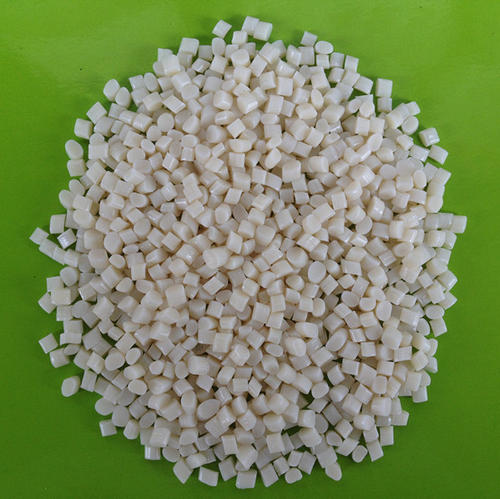
But it’s not just ambient air. Recycled TPE or off-spec lots carry hidden loads—fillers like calcium carbonate can harbor water too. Test it: weigh a sample pre- and post-dry; anything over 0.1% loss screams trouble. And here’s a tip from the trenches: use a hopper dryer, not a hot air oven—consistent flow beats batch baking every time.
The Venting Vex: When Air Gets Cornered and Fights Back
Now, shift gears to venting, that unsung hero of mold design. In a perfect world, every gas particle drifts out like smoke from a chimney. Reality? Molds are mazes, and ABS’s textured surface—etched for grip—creates cul-de-sacs where air sulks. During TPE injection, the melt rushes in at 50-100 mm/s, compressing pockets that burst into bubbles if vents clog with flash or residue.
I’ve redesigned vents on a whim more times than I can tally. Take this one automotive client: their ABS-TPE shifter knobs bubbled at the base. We added 0.02 mm vents along the parting line—narrow enough for gas, wide for no leaks—and bubbles vanished. It’s cause and effect in action: poor venting spikes cavity pressure, delaying fill and inviting voids. Pro tip: position vents at thick-to-thin transitions; that’s where gases congregate, heavy as storm clouds.
Ejector pins double as vents sometimes—drill ’em right, and they bleed air without scarring the part. But overdo it, and flash creeps in, mocking your precision. Balance is key, and it comes from trial runs, listening to the machine’s hum for those telltale gasps.
Heat’s Hot Temper: Thermal Dynamics Gone Awry
Ah, temperature—the wild card that can kiss or kill your encapsulation. TPE melts soft and slow, ABS hardens crisp and quick. That mismatch? It breeds differential shrinkage, where the cooling TPE pulls away, sucking in micro-bubbles like a vacuum cleaner on low. Mold at 40°C, and TPE freezes mid-flow; hit 80°C, and it bonds like glue.
From personal scars, I recall a medical device run—syringe grips in TPE over ABS. Bubbles plagued the finger loops until we zoned the barrel: 180°C rear, 210°C front, nozzle at 200°C. Why? Gradual ramps ensure even melt, no hot spots frothing gases. And the mold? Water-circulated at 60°C, stabilizing that ABS-TPE handshake. It’s sensory, almost: feel the ejector’s warmth; if it’s uneven, temps are off-kilter.

Overheat, though, and volatiles from stabilizers boil off, adding to the bubble brew. Underheat, and viscosity spikes, trapping more air. Aim for the Goldilocks zone—supplier specs as your map, but tweak with your nose for the melt’s honey-like sheen.
| Temperature Zone | Ideal Range for TPE/ABS (°C) | Bubble Risk if Off | Sensory Cue |
|---|---|---|---|
| Barrel Rear | 170-190 | High (poor plasticization) | Melt too stiff, like cold butter |
| Barrel Front | 190-210 | Medium (uneven flow) | Stringy extrudate on air shot |
| Nozzle | 200-220 | Low (volatiles escape) | Smooth, bubble-free drool |
| Mold | 50-80 | High (premature freeze) | Part feels brittle on touch |
Material Meddlers: When Formulas Fall Short
No chat on bubbles skips the recipe. TPE’s a cocktail—SEBS base, oils for flex, fillers for bulk. Skimp on compatibilizers like polar-modified styrenics, and ABS-TPE repel, leaving fissures for gases. High filler loads? They nucleate bubbles, acting like seeds in a storm.
In one heartfelt flop, I formulated a custom TPE for a client’s ergonomic mouse—85A hardness, sky-blue tint. Bubbles erupted because the oil content was low, jacking viscosity. Upped it 5%, added 2% maleic anhydride, and the bond sang. It’s personal: materials feel alive under your fingers, yielding to tweaks that whisper success.
Volatiles lurk too—plasticizers or antioxidants that sublime at heat, puffing voids. Source clean; test with TGA for off-gassers. And ABS side? Its butadiene phase can outgas if not primed, so flame-treat or plasma-etch the surface for better wetting.

Real-World Rumbles: Stories from the Shop Floor
Let’s get gritty with cases I’ve lived. Case one: A power tool firm battled bubbles in TPE-handled ABS pliers. Culprit? High shear at a narrow gate—melt frothed like shaken soda. Solution: Widen to 1.2 mm, slow to 40 mm/s. Yields soared; grips felt plush, not pitted.
Case two hit closer—a startup’s wearable tech band. Moisture from rushed drying bubbled the strap’s curve. We installed inline dryers, monitoring dew points below -40°C. The founder’s relief? Palpable, like a weight lifted.
These aren’t hypotheticals; they’re the scars that shape expertise. Each teaches: inspect upstream, from pellet to part.
Strategies to Stomp Out Bubbles: Your Battle Plan
Enough diagnosis—time for cures. Start holistic: audit your chain. Dry religiously; vent voraciously; temper tenderly.
Process tweaks shine. Slow fills for thick sections, pulse the pressure to nudge gases out. Post-mold annealing at 80°C for an hour relaxes stresses, collapsing latent voids. And design? Chamfer ABS edges, add overflow wells for gas dumps.
Equipment matters—servo-hydraulics for precise shots beat old clunkers. Clean barrels weekly; residue’s a bubble breeder.
I’ve coached teams through this, watching doubt turn to pride as parts gleam bubble-free. It’s rewarding, that first flawless rack.
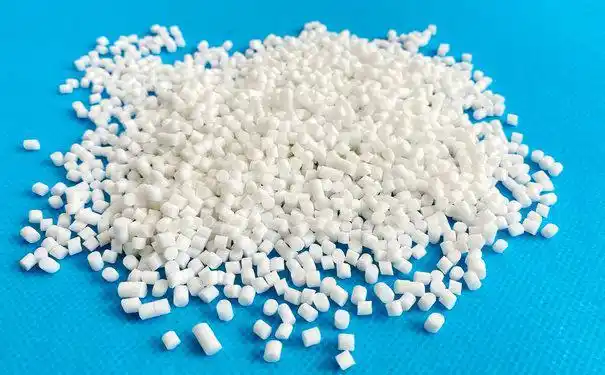
Beyond Bubbles: Long-Term Bonding Bliss
Bubbles fixed, but encapsulation’s soul is adhesion. Without it, your hybrid crumbles. Promote it with surface preps—corona treatment zaps ABS to 40 dynes/cm, inviting TPE like a warm hug.
Formulas evolve too: olefinic TPEs for PP, styrenics for ABS. Test pull strengths; aim over 5 MPa.
Sustainability sneaks in—bio-based TPEs bubble less, greener to boot. Exciting times ahead.
Wrapping It Warm: Mastering the Merge
Encapsulating TPE on ABS is artful alchemy, bubbles be damned. With vigilance, you tame the chaos, crafting pieces that feel as good as they function. I’ve poured my career into this—failures fuel the fire, successes the spark. Your turn: tweak, test, triumph.
Quick Q&A: Your Bubble Busters
Q: How long should I dry TPE before encapsulating ABS? A: Two to four hours at 80-100°C, till moisture dips under 0.05%. It’s non-negotiable—skimp, and bubbles party.
Q: Can bubbles appear days after molding? A: Yep, if they’re shrinkage voids masquerading. Anneal post-mold to coax ’em out early.
Q: Is TPE always bubble-prone on ABS? A: Not if you match grades—polar-enhanced TPEs bond tighter, venting gases like pros.
Q: What’s a cheap fix for poor venting? A: Ejector pin vents first—drill shallow, test often. No mill needed.
Q: Does hardness affect bubbling? A: Softer TPEs (under 50A) flow better but trap more air; balance with speed.
Q: Ever seen bubbles from ABS itself? A: Rare, but yes—if it’s moist or filled heavy. Prime it clean.

